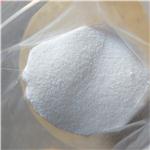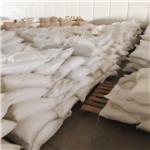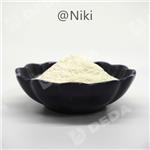Aniline (hydrochloride) (Item No. 21963) is an analytical reference standard that is structurally categorized as a synthetic intermediate. It is used to make the imine derivative of NPP as part of the synthesis of fentanyl (Item Nos. 14719 | ISO60197 ) and its derivatives. This product is intended for research and forensic applications.
Aniline is a clear, colorless, oily liquid that darkens
on exposure to light; with a characteristic amine-like
odor.
Aniline hydrochloride, a white to greenishcrystalline solid that meltsat 198°C and boils at 245 °C;soluble in water,alcohol, and chloroform; used in making dyes and in printing. Also known as anilinechloride,anilinesalt.
Intermediates, dyeing and printing, aniline black.
Aniline hydrochloride was used in the preparation of polyaniline coated poly(styrene-co-styrene sulfonate) nanoparticles. It was used to study the induction of Nei-like DNA glycosylases (NEIL1/2)-mediated base excision repair(BER) in rat spleen and 8-oxoguanine glycosylase 1-mediated BER due to aniline exposure. It is used in printing inks, clothing marking inks, paints and paint removers. It is also used as a stove polisher and shoe polisher, as well as in the synthesis of dyes, crayons and antioxidants.
A white to greenish colored crystalline solid. Toxic by ingestion and a skin and eye irritant. May emit toxic aniline and chloride fumes under exposure to high temperatures or flame. Used to make dyes and printing ink.
Aniline hydrochloride is sensitive to air and light (darkens). Soluble in water and denser than water.
Aniline hydrochloride is incompatible with oxidizing materials.
TOXIC; inhalation, ingestion or skin contact with material may cause severe injury or death. Contact with molten substance may cause severe burns to skin and eyes. Avoid any skin contact. Effects of contact or inhalation may be delayed. Fire may produce irritating, corrosive and/or toxic gases. Runoff from fire control or dilution water may be corrosive and/or toxic and cause pollution.
Combustible material: may burn but does not ignite readily. When heated, vapors may form explosive mixtures with air: indoors, outdoors and sewers explosion hazards. Contact with metals may evolve flammable hydrogen gas. Containers may explode when heated. Runoff may pollute waterways. Substance may be transported in a molten form.
The acute toxicity of aniline involves its activation in vivo to 4-hydroxyaniline and the formation of adducts with hemoglobin. In erythrocytes, this is associated with the release of iron and the accumulation of methemoglobin and the development of hemolytic anemia and inflammation of the spleen. Tumor formation is often observed in the spleen on prolonged administration.
Suspected carcinogen
with experimental carcinogenic and
tumorigenic data. Poison by intraperitoneal
route. Moderately toxic by ingestion.
Experimental teratogenic effects. Human
mutation data reported. A skin and eye
irritant. Combustible when exposed to heat
or flame. When heated to decomposition or
on contact with acid or acid fumes, it emits
highly toxic fumes of aniline and chlorine
compounds. Reacts explosively with aniline at 240℃/7.6 bar. Can react vigorously with
oxidizing materials. To fight fire, use water,
CO2, water mist or spray, dry chemical. See
also ANILINE.
Aniline is widely used as an intermediate
in the synthesis of dyestuffs. It is also used in the
manufacture of rubber accelerators and antioxidants, pharmaceuticals,
marking inks; tetryl, optical whitening agents;
photographic developers; resins, varnishes, perfumes, shoe
polishes, and many organic chemicals.
UN1547 Aniline, Hazard Class: 6.1; Labels: 6.1-
Poisonous materials. UN1548 Aniline hydrochloride,
Hazard Class: 6.1; Labels: 6.1-Poisonous materials.
Purification is as for aniline HBr above. [Beilstein 12 IV 232.]
May form explosive mixture with air.
Unless inhibited (usually methanol), aniline is readily able
to polymerize. Fires and explosions may result from contact
with halogens, strong acids; oxidizers, strong base organic
anhydrides; acetic anhydride, isocyanates, aldehydes,
sodium peroxide. Strong reaction with toluene diisocyanate.
Reacts with alkali metals and alkali earth metals. Attacks
some plastics, rubber and coatings; copper and copper
alloys.
Consult with environmental
regulatory agencies for guidance on acceptable disposal
practices. Generators of waste containing this contaminant (≥100 kg/mo) must conform with EPA regulations governing
storage, transportation, treatment, and waste disposal.
Incineration with provision for nitrogen oxides removal from
flue gases by scrubber, catalytic or thermal device.



